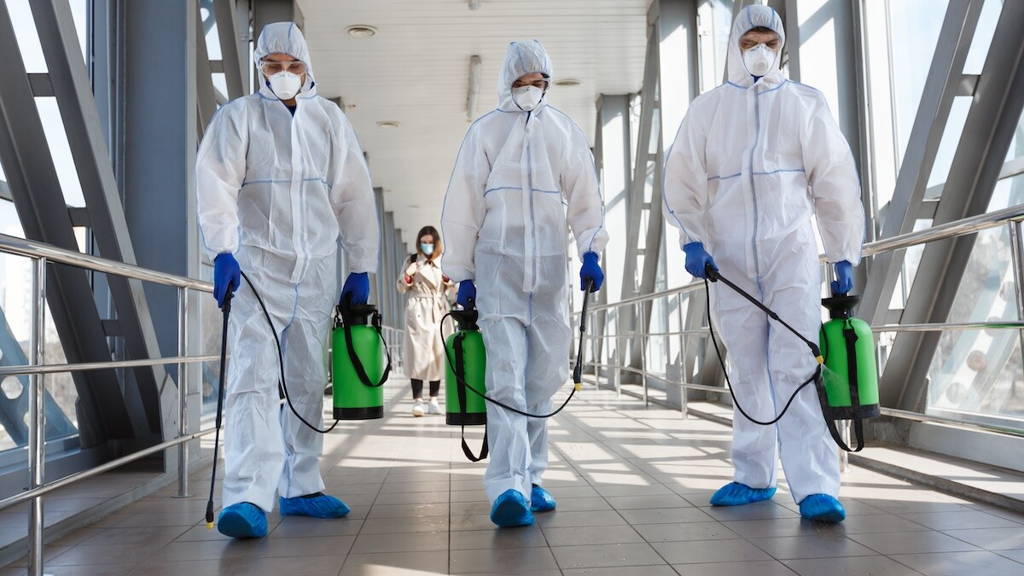How can we detect the next dangerous virus before it spreads among humans? The answer to this crucial question is explored in a recent publication in The Lancet Infectious Diseases, in which international researchers, including Marion Koopmans (Erasmus MC) and Frank Møller Aarestrup (DTU, Denmark), advocate the use of AI in combination with the One Health principle as a powerful tool in pandemic preparedness.
According to the authors, AI is not a panacea, but it can function as a valuable “co-scientist”. By bringing together data on humans, animals and the environment, AI models can recognize patterns that would otherwise remain invisible. This enables healthcare and research organizations to respond more quickly to impending outbreaks and to deploy more targeted surveillance. ‘AI can help determine where in the world we need to intensify monitoring, both geographically, in certain animal species, in wastewater and in humans. This allows us to focus on hotspots with the highest risk,’ says Aarestrup.
Early detection
An important application of AI lies in the analysis of genetic material via metagenomic sequencing. This involves screening samples from, for example, air, water or food for known and unknown microorganisms. Such samples often contain millions of genetic fragments, many of which are unknown.
AI helps to filter these enormous amounts of data and can identify abnormal or potentially dangerous patterns. In addition, AI tools can predict what genetic mutations mean for the transmissibility or severity of viruses. For example, AI-powered protein models provide insight into how a mutation affects the virus structure and what this means for the risk of spread or disease.
One Health as the basis for data-driven preparedness
The researchers emphasise the importance of the One Health approach, which views human, animal and environmental health. Many outbreaks, such as COVID-19, mpox and avian influenza, originate in animals, but it is difficult to predict when and where such a virus will jump to humans.
Climate change, intensive livestock farming and the degradation of natural areas increase the risk of so-called “spillover” incidents. AI helps to identify these risks early on and take preventive action before it is too late.
AI as a “co-scientist”
The authors also discuss the emergence of AI systems that function as co-scientists: from hypothesis formation and literature research to data analysis and reporting. ‘AI is becoming a permanent fixture at the table, alongside doctors and researchers. But that also places demands on us as supervisors, teachers and assessors,’ says Koopmans. ‘We must learn how to work with this technology and continue to critically assess its results.’
AI offers opportunities to strengthen pandemic preparedness, provided it is seen as a complement to existing methods. By cleverly combining what AI can do with what we already know as humans, early detection and risk assessment of new infectious diseases is becoming more realistic than ever.
AI and pandemic preparedness
Earlier this year, a global team of researchers led by the University of Oxford also explored how AI can strengthen pandemic preparedness, with a focus on safety, ethics, and accountability. Their study emphasized the need for global collaboration and transparency in sharing both datasets and AI models. While current AI applications in healthcare mainly support individual care, such as diagnostics and treatment decisions, the researchers highlighted the broader potential of AI in infectious disease research and outbreak response.
Professor Moritz Kraemer of Oxford's Pandemic Sciences Institute said that AI could, within five years, transform global responses to pandemics. By analyzing large volumes of climate and socio-economic data, AI may help predict where and how outbreaks will occur, assess their impact, and improve understanding of immune system responses to new pathogens. If these tools are integrated into national health systems, they could significantly enhance global preparedness and potentially save lives in future pandemics.
In another initiative, international researchers explored how smartwatches could play a key role in early virus detection and pandemic prevention. Their study focused on the potential of wearable technology to identify infections before individuals show symptoms. During the COVID-19 pandemic, it was found that nearly 44% of infections spread before people exhibited symptoms, making early detection crucial to contain outbreaks.
The study showed that smartwatches can detect COVID-19 and the flu with up to 90% accuracy by analyzing heart rate, skin temperature, and breathing patterns. By warning users early, before they become symptomatic, wearables can prompt people to reduce social contacts, thereby significantly lowering transmission rates.









